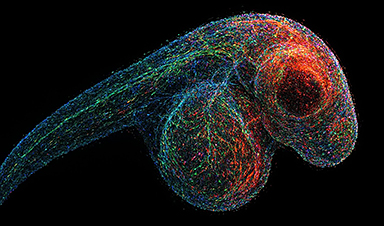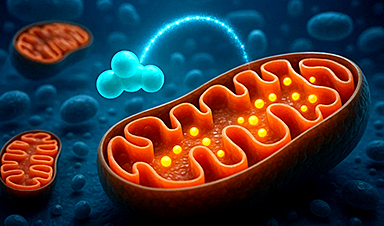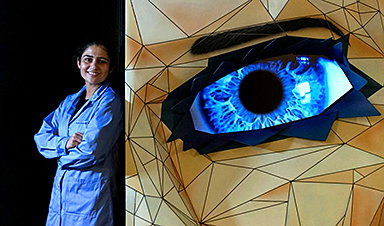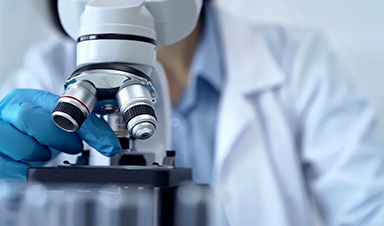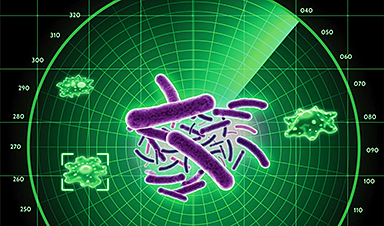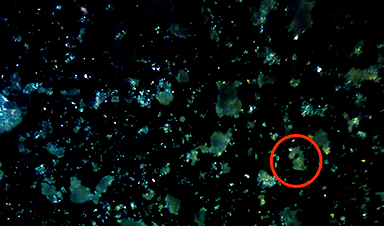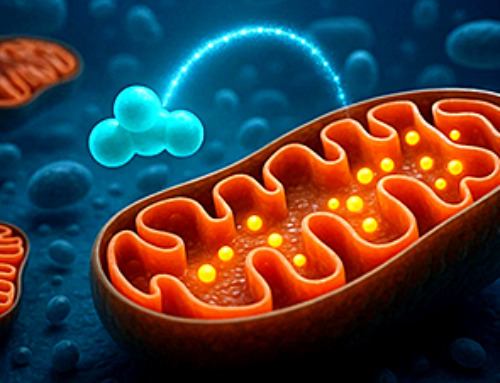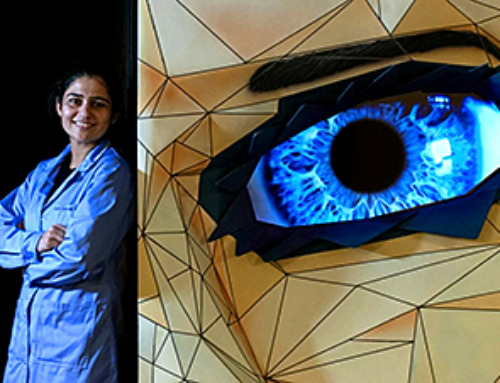What if you could take a picture of every gene inside a living organism—not with light, but with DNA itself?
Scientists at the University of Chicago have pioneered a revolutionary imaging technique called volumetric DNA microscopy. It builds intricate 3D maps of genetic material by tagging and tracking molecular interactions, creating never-before-seen views inside organisms like zebrafish embryos.
New Window into Genetics
Traditional genetic sequencing can reveal a lot about the genetic material in a sample, such as a piece of tissue or a drop of blood, but it doesn’t show where specific genetic sequences are located within that sample, or how they relate to nearby genes and molecules.
To address this, researchers at the University of Chicago are developing a new technology that captures both the identity and location of genetic material. The method works by tagging individual DNA or RNA molecules and tracking how neighboring tags interact. These interactions are used to build a molecular network that reflects the spatial arrangement of genes, effectively creating a three-dimensional map of genetic activity. Known as volumetric DNA microscopy, the technique generates detailed 3D images of entire organisms from the inside out – down to the level of individual cells.

Imaging an Entire Organism
Joshua Weinstein, PhD, Assistant Professor of Medicine and Molecular Engineering at UChicago, has spent over a decade developing DNA microscopy, with support from the National Institutes of Health and the National Science Foundation. In a recent study published today (March 27) in Nature Biotechnology, Weinstein and postdoctoral researcher Nianchao Qian used the technique to produce a complete 3D DNA map of a zebrafish embryo—a widely used model for studying development and the nervous system.
“It’s a level of biology that no one has ever seen before,” Weinstein said. “To be able to see that kind of a view of nature from within a specimen is exhilarating.”
Rethinking Microscopy
Unlike traditional microscopes that use light or lenses, DNA microscopy creates images by calculating interactions among molecules, providing a new way to visualize genetic material in 3D. First, short DNA sequence tags called unique molecular identifiers (UMIs) are added to cells. They attach to DNA and RNA molecules and begin making copies of themselves. This starts a chemical reaction that creates new sequences, called unique event identifiers (UEIs), that are unique to each pairing.
It’s these pairings that help create the spatial map of where each genetic molecule is located. UMI pairs that are close together interact more frequently and generate more UEIs than those that are farther apart. Once the DNA and RNA are sequenced, a computational model reconstructs their original locations by analyzing the physical links between UMI-tags, creating a spatial map of gene expression.
Cell Phones and Cells: A Clever Analogy
Weinstein compares the technique to using data from cell phones pinging each other to determine people’s location in a city. Knowing the cell phone number or IP address of each person is like knowing the genetic sequence of one molecule, but if you can layer on their interactions with other phones nearby, you can work out their locations too.
“We can do this with cell phones and people, so why not do that with molecules and cells,” he said. “This turns the idea of imaging on its head. Rather than relying on an optical apparatus to shine light in, we can use biochemistry and DNA to form a massive network between molecules and encode their proximities to each other.”
Future Applications in Cancer and Immunotherapy
DNA microscopy doesn’t rely on prior knowledge of the genome or shape of a specimen, so it could be useful for understanding genetic expression in unique, unknown contexts. Tumors generate countless new genetic mutations, for example, so the tool would be able to map out the tumor microenvironment and where it interacts with the immune system. Immune cells interact with each other and respond to pathogens in context-specific ways, so DNA microscopy could help unravel those genetic mechanisms. Such applications could in turn guide more precise immunotherapy for cancer or tailor personalized vaccines.
“This is the critical foundation for being able to have truly comprehensive information about the ensemble of unique cells within the lymphatic system or tumor tissue,” Weinstein said. “There has still been this major gap in technology for allowing us to understand idiosyncratic tissue, and that’s what we’re trying to fill in here.”
DOI: 27 March 2025, Nature Biotechnology.
10.1038/s41587-025-02613-z
Additional funding for the study, “Spatial-transcriptomic imaging of an intact organism using volumetric DNA microscopy,” was provided by the Damon Runyon Foundation and the Moore Foundation.
News
This Tiny Cellular Gate Could Be the Key to Curing Cancer – And Regrowing Hair
After more than five decades of mystery, scientists have finally unveiled the detailed structure and function of a long-theorized molecular machine in our mitochondria — the mitochondrial pyruvate carrier. This microscopic gatekeeper controls how [...]
Unlocking Vision’s Secrets: Researchers Reveal 3D Structure of Key Eye Protein
Researchers have uncovered the 3D structure of RBP3, a key protein in vision, revealing how it transports retinoids and fatty acids and how its dysfunction may lead to retinal diseases. Proteins play a critical [...]
5 Key Facts About Nanoplastics and How They Affect the Human Body
Nanoplastics are typically defined as plastic particles smaller than 1000 nanometers. These particles are increasingly being detected in human tissues: they can bypass biological barriers, accumulate in organs, and may influence health in ways [...]
Measles Is Back: Doctors Warn of Dangerous Surge Across the U.S.
Parents are encouraged to contact their pediatrician if their child has been exposed to measles or is showing symptoms. Pediatric infectious disease experts are emphasizing the critical importance of measles vaccination, as the highly [...]
AI at the Speed of Light: How Silicon Photonics Are Reinventing Hardware
A cutting-edge AI acceleration platform powered by light rather than electricity could revolutionize how AI is trained and deployed. Using photonic integrated circuits made from advanced III-V semiconductors, researchers have developed a system that vastly [...]
A Grain of Brain, 523 Million Synapses, Most Complicated Neuroscience Experiment Ever Attempted
A team of over 150 scientists has achieved what once seemed impossible: a complete wiring and activity map of a tiny section of a mammalian brain. This feat, part of the MICrONS Project, rivals [...]
The Secret “Radar” Bacteria Use To Outsmart Their Enemies
A chemical radar allows bacteria to sense and eliminate predators. Investigating how microorganisms communicate deepens our understanding of the complex ecological interactions that shape our environment is an area of key focus for the [...]
Psychologists explore ethical issues associated with human-AI relationships
It's becoming increasingly commonplace for people to develop intimate, long-term relationships with artificial intelligence (AI) technologies. At their extreme, people have "married" their AI companions in non-legally binding ceremonies, and at least two people [...]
When You Lose Weight, Where Does It Actually Go?
Most health professionals lack a clear understanding of how body fat is lost, often subscribing to misconceptions like fat converting to energy or muscle. The truth is, fat is actually broken down into carbon [...]
How Everyday Plastics Quietly Turn Into DNA-Damaging Nanoparticles
The same unique structure that makes plastic so versatile also makes it susceptible to breaking down into harmful micro- and nanoscale particles. The world is saturated with trillions of microscopic and nanoscopic plastic particles, some smaller [...]
AI Outperforms Physicians in Real-World Urgent Care Decisions, Study Finds
The study, conducted at the virtual urgent care clinic Cedars-Sinai Connect in LA, compared recommendations given in about 500 visits of adult patients with relatively common symptoms – respiratory, urinary, eye, vaginal and dental. [...]
Challenging the Big Bang: A Multi-Singularity Origin for the Universe
In a study published in the journal Classical and Quantum Gravity, Dr. Richard Lieu, a physics professor at The University of Alabama in Huntsville (UAH), which is a part of The University of Alabama System, suggests that [...]
New drug restores vision by regenerating retinal nerves
Vision is one of the most crucial human senses, yet over 300 million people worldwide are at risk of vision loss due to various retinal diseases. While recent advancements in retinal disease treatments have [...]
Shingles vaccine cuts dementia risk by 20%, new study shows
A shingles shot may do more than prevent rash — it could help shield the aging brain from dementia, according to a landmark study using real-world data from the UK. A routine vaccine could [...]
AI Predicts Sudden Cardiac Arrest Days Before It Strikes
AI can now predict deadly heart arrhythmias up to two weeks in advance, potentially transforming cardiac care. Artificial intelligence could play a key role in preventing many cases of sudden cardiac death, according to [...]
NanoApps Medical is a Top 20 Feedspot Nanotech Blog
There is an ocean of Nanotechnology news published every day. Feedspot saves us a lot of time and we recommend it. We have been using it since 2018. Feedspot is a freemium online RSS [...]
[/fusion_text][/fusion_builder_column][/fusion_builder_row][/fusion_builder_container]
